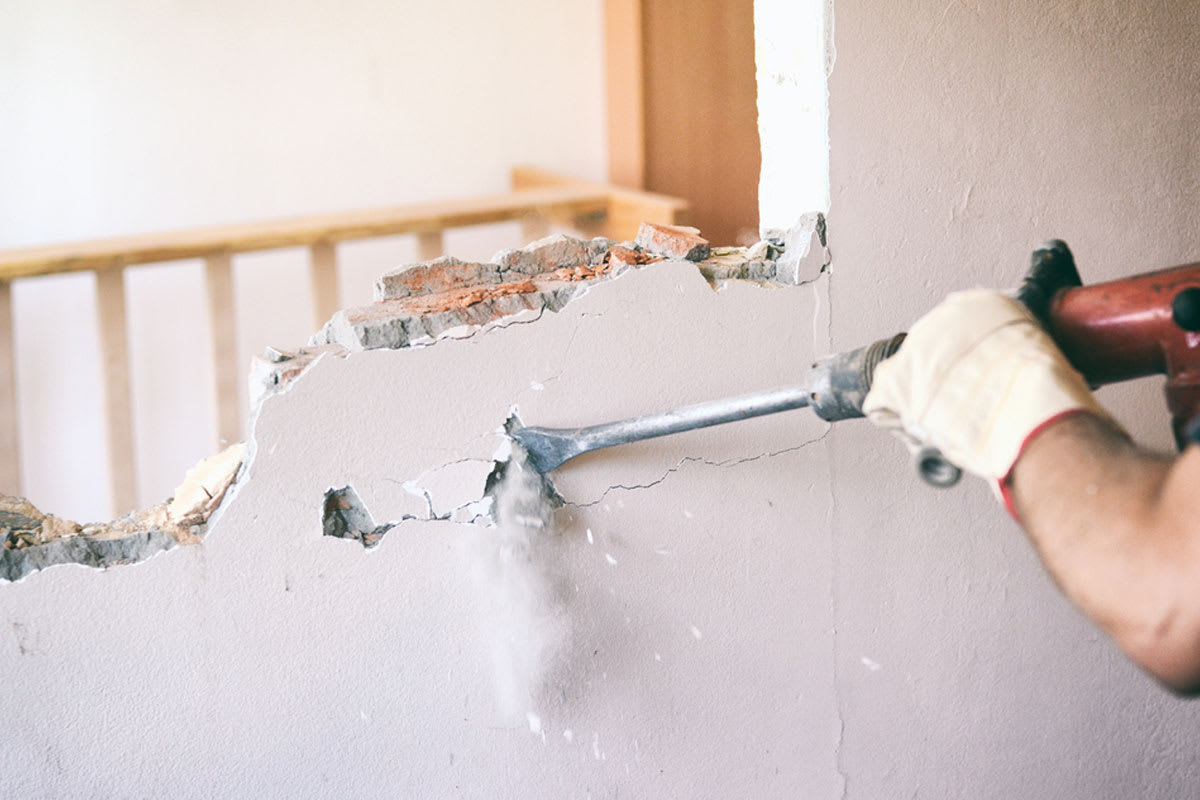Interior Demolition: Key Considerations and Best Practices
Interior Demolition: Key Considerations and Best Practices
Blog Article
The Ultimate Overview to Interior Demolition Techniques and Devices
Within the world of indoor remodellings, the art of demolition is a crucial stage that requires precision, skill, and the right set of tools. Whether you are an experienced expert or a DIY lover, understanding the ins and outs of indoor demolition techniques can make all the difference in attaining a successful task outcome.
Essential Indoor Demolition Tools
When carrying out indoor demolition projects, having the ideal tools is vital for performance and safety and security. One of the most important tools for interior demolition is the demolition hammer. This durable device is created to damage with difficult materials like tile, concrete, and drywall.
Its capability to make specific cuts in limited rooms makes it ideal for demolition work. Overall, having these vital indoor demolition tools will substantially improve the efficiency and safety of any demolition task.

Safety And Security Preventative Measures During Demolition

In addition, all employees associated with the demolition procedure ought to get ample training on the appropriate handling of devices and equipment to reduce crashes. It is necessary to safeguard the workspace by erecting signs and barriers to stop unauthorized gain access to - interior demolition. Routinely evaluating and maintaining devices and equipment can likewise add to a safer working setting. By adhering to these security preventative measures, interior demolition tasks can be accomplished successfully while prioritizing the well-being of all individuals involved.
Techniques for Removing Wall Surfaces
Executing proper safety and security precautions throughout interior demolition tasks is critical for producing a protected workplace, and one key facet of such projects entails understanding methods for removing wall surfaces. One typically made use of method is hand-operated demolition, which requires the usage of basic hand devices such as sledgehammers, crowbars, and utility blades to very carefully dismantle the wall surface item by item. This method enables higher control over the demolition procedure, especially in delicate areas where accuracy is vital.
For bigger, a lot more intricate wall surfaces, mechanical demolition may be necessary. This involves utilizing heavy machinery like bulldozers or excavators to tear down walls successfully. It is critical to make certain that the architectural stability of the structure is not compromised during mechanical demolition.
An additional technique for eliminating wall surfaces is deconstruction, where the wall is dismantled in a manner that protects multiple-use materials. This lasting strategy is eco-friendly and can also help in reducing disposal expenses. Whichever strategy is employed, it is vital to follow appropriate safety procedures and take into consideration the structural ramifications of wall surface removal to make sure a successful interior demolition job.
Removing Floor Covering Like a Pro
Successfully getting rid of flooring during indoor demolition calls for the appropriate tools and strategies to ensure a smooth and successful process. The very first step in eliminating floor covering is to clear the area of any type of furnishings or barriers. Next off, recognize the type of flooring to figure out the appropriate removal approach. For hardwood or laminate flooring, beginning by eliminating the baseboards and after that make use of a flooring scrape to raise and remove the slabs. Carpeting elimination involves reducing the carpeting right into workable sections and rolling it up for disposal. For tile or plastic flooring, a chisel or floor scrape can be made use of to tear up the tiles or sheets. It's crucial to wear protective equipment such as handwear covers, safety glasses, and a mask to prevent injuries and direct exposure to dust and debris. In addition, having a dumpster or assigned disposal location prepared for the gotten rid of floor covering materials is important for preserving a tidy workplace. By complying with these methods and utilizing the right devices, getting rid of flooring like a pro can be attained successfully and efficiently.
Appropriate Waste Disposal Approaches
After successfully getting rid of floor covering making use of the ideal devices and techniques, the next important reference action in the indoor demolition procedure is applying correct waste disposal techniques. Correct waste disposal is necessary for preserving a clean and secure work environment throughout and after demolition.

Professionals must stick to neighborhood regulations concerning waste disposal to stay clear of penalties and penalties. Utilizing specialist waste monitoring solutions can streamline the disposal process and guarantee compliance with environmental standards. By applying correct waste disposal methods, interior demolition projects can be completed efficiently and sustainably.
Conclusion
To conclude, interior demolition needs making use of important tools and stringent security precautions to make sure a risk-free and effective procedure. Strategies for getting rid of walls and floor covering need to be done very carefully and successfully to avoid any kind of damage or accidents. Correct waste disposal approaches are also important to keep a clean and organized workplace. By complying with these guidelines, interior demolition can be completed efficiently and with very little dangers.
One of the most Visit This Link crucial tools for interior demolition is the demolition hammer (interior demolition). Generally, having these important indoor demolition tools will significantly boost the performance and safety of any type of demolition job
Effectively eliminating flooring throughout interior demolition requires the appropriate tools and strategies to make sure a smooth and successful procedure.After effectively eliminating flooring making use of the proper tools and strategies, the next important action in the indoor demolition process is applying appropriate waste disposal approaches.In conclusion, indoor demolition calls for the use of necessary devices and strict security preventative measures to ensure a view it secure and successful procedure.
Report this page